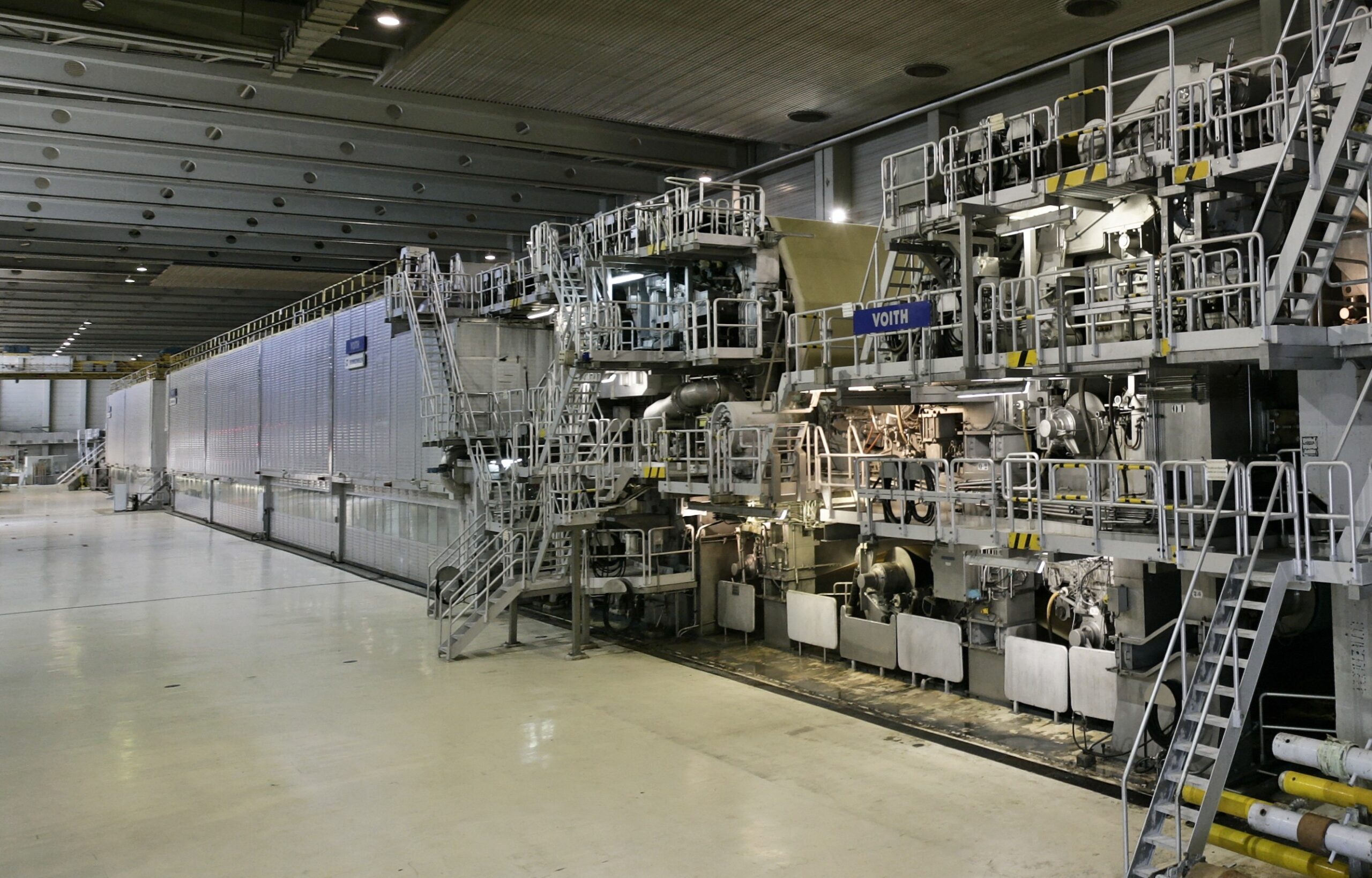25 Years of PM9: Voith and Saica Set Standards in Paper Production
- PM9 was initially launched as the fastest paper machine for lightweight containerboard and increased Saica’s production capacity by 350,000 tons per year.
- Successful collaboration between Voith and Saica set new benchmarks in the paper industry and today maintains PM9’s leadership position in operational efficiency and product quality.
Voith and Saica Group celebrate 25 years of the PM9 production line at Saica in El Burgo de Ebro, Zaragoza, Spain., in October. Today, the board and packaging machine is regarded as a true benchmark and leader in terms of operational efficiency and product quality.
PM9 started up on 12 October 2000. The production line was designed to meet Saica’s goal of producing a basis weight range of 75 to 110gsm with operational speeds from 975 to 1,450m/min and a production capacity of 350,000 tons per year. These speeds were totally unknown in those times for board and packaging grades. The line set new standards in the production of high-performance lightweight containerboard and has since reached annual production outputs well above its original design.
“When Saica’s board of directors decided to invest in a new facility for the production of lightweight corrugating medium grades, we knew we needed a machine that didn’t yet exist,” recalled Roberto Arnaiz, Mill Manager at Saica Paper El Burgo de Ebro. “Voith supported us from the beginning, and together we developed a facility that exceeded all our expectations.”
The PM9 at Saica is a prime example of innovation and technical excellence. Since its commissioning, it has not only significantly increased Saica’s production capacity but also set new standards for efficiency and quality in paper production. The PM9 is a symbol of the success of the long-standing and trusting partnership between Voith and Saica.
Ralf Sorg, President Projects at Voith Paper
“The successful commissioning and smooth operation of the PM9 are the results of long-lasting and close collaboration and high commitment from both teams,” Arnaiz continued. “We are proud that the PM9 remains a significant element of our production line even 25 years later.”
Voith and Saica have made history together and look back on a quarter-century of innovation and success. The PM9 remains a symbol of technological excellence and partnership in the paper industry. Voith looks forward to continuing to participate in the optimisation and further development of the facility in the coming years.
To mark this milestone, Saica and Voith will collaborate on an innovative project to further increase the efficiency and sustainability of the production line. The upgrade is scheduled for March 2026.
About Saica Group
Saica Group offers sustainable paper solutions for the manufacturing of corrugated cardboard and packaging, promoting circularity in waste management. With more than 12,000 employees and a presence in Spain, France, Italy, Portugal, the United Kingdom, Ireland, Turkey, Luxembourg, the Netherlands, Poland and the United States, Saica Group has four business divisions: the manufacturing of recycled paper for corrugated cardboard (Saica Paper), waste management and environmental services (Saica Natur), the production of corrugated cardboard packaging (Saica Pack) and flexible packaging (Saica Flex). The group’s turnover is EUR3,662 million (consolidated sales on 31 December 2024).
About Voith Group
Voith Group is a global technology company. With its broad portfolio of systems, products, services and digital applications, Voith sets standards in the markets of energy, paper, raw materials and transport. Founded in 1867, Voith today has around 22,000 employees, sales of €5.2 billion and locations in over 60 countries worldwide and thus is one of the larger family-owned companies in Europe.
The Group Division Voith Paper is part of the Voith Group. As the full-line supplier to the paper industry, it provides the largest range of technologies, services and products on the market and offers paper manufacturers integrated solutions from a single source. The company’s continuous stream of innovations facilitates resource-conserving production and supports customers in significantly reducing their carbon footprint. With its comprehensive automation products and leading digitalisation solutions from the Papermaking 4.0 portfolio, Voith offers its customers state-of-the-art digital technologies to improve the availability and efficiency of their systems in all sections of the production process.



